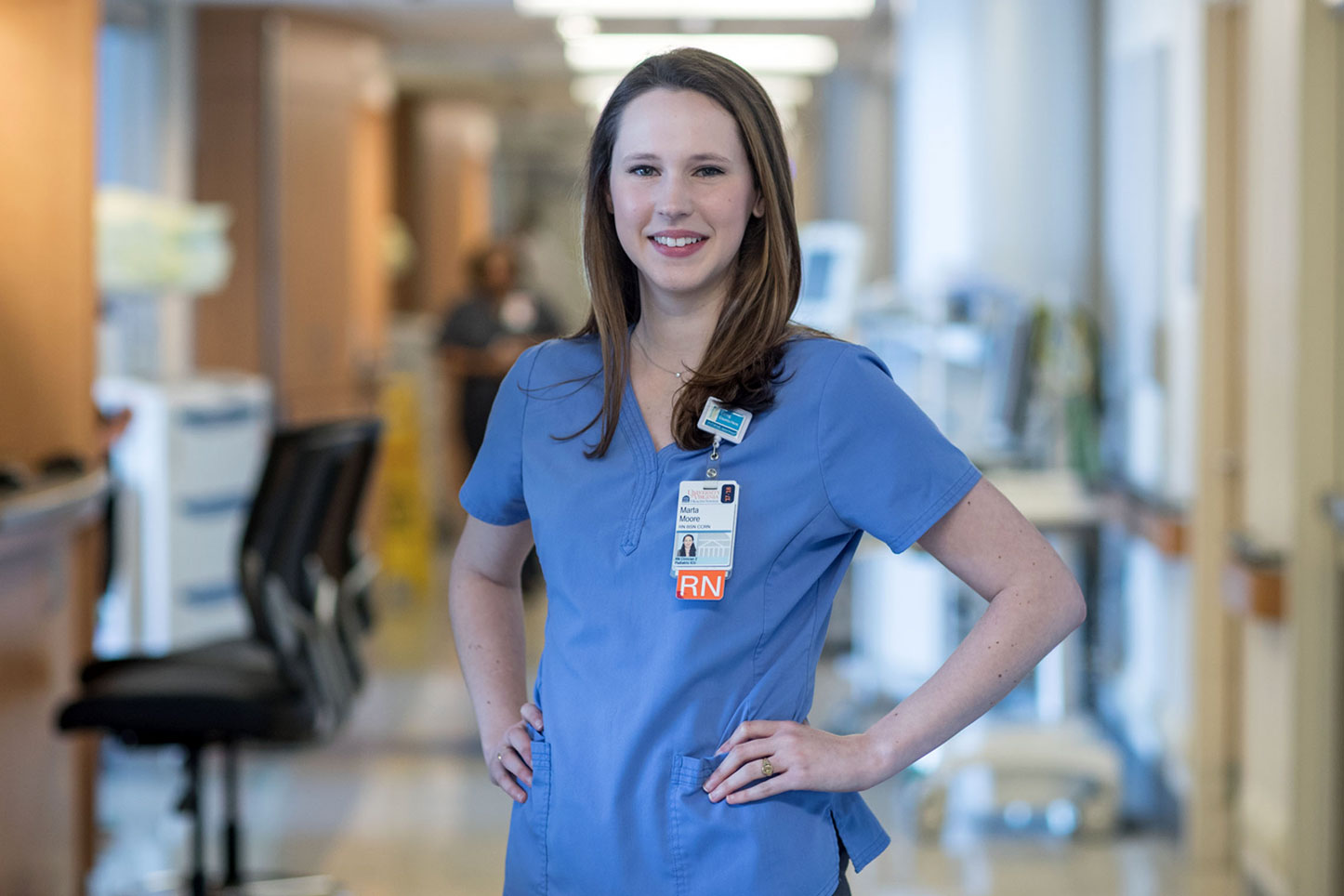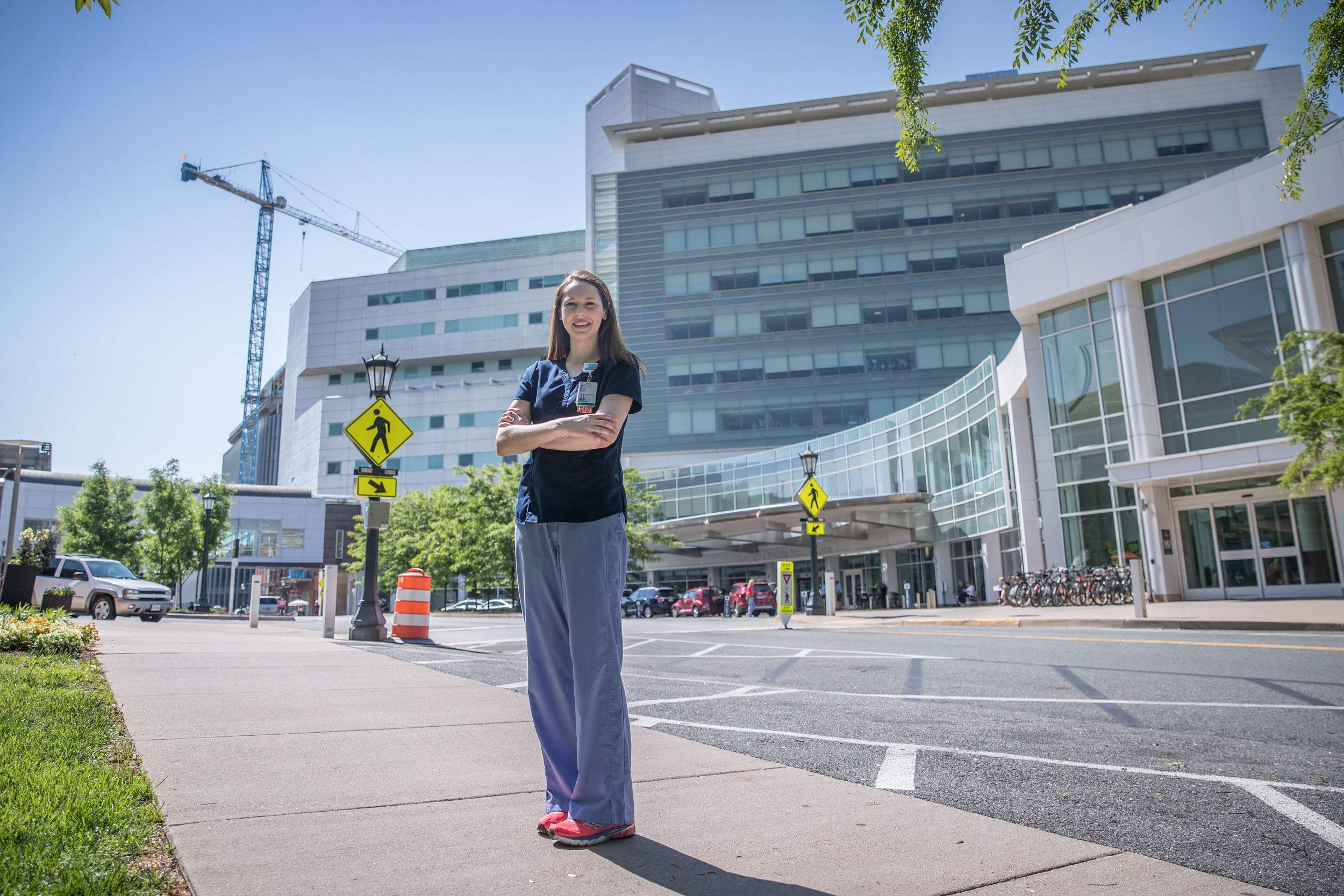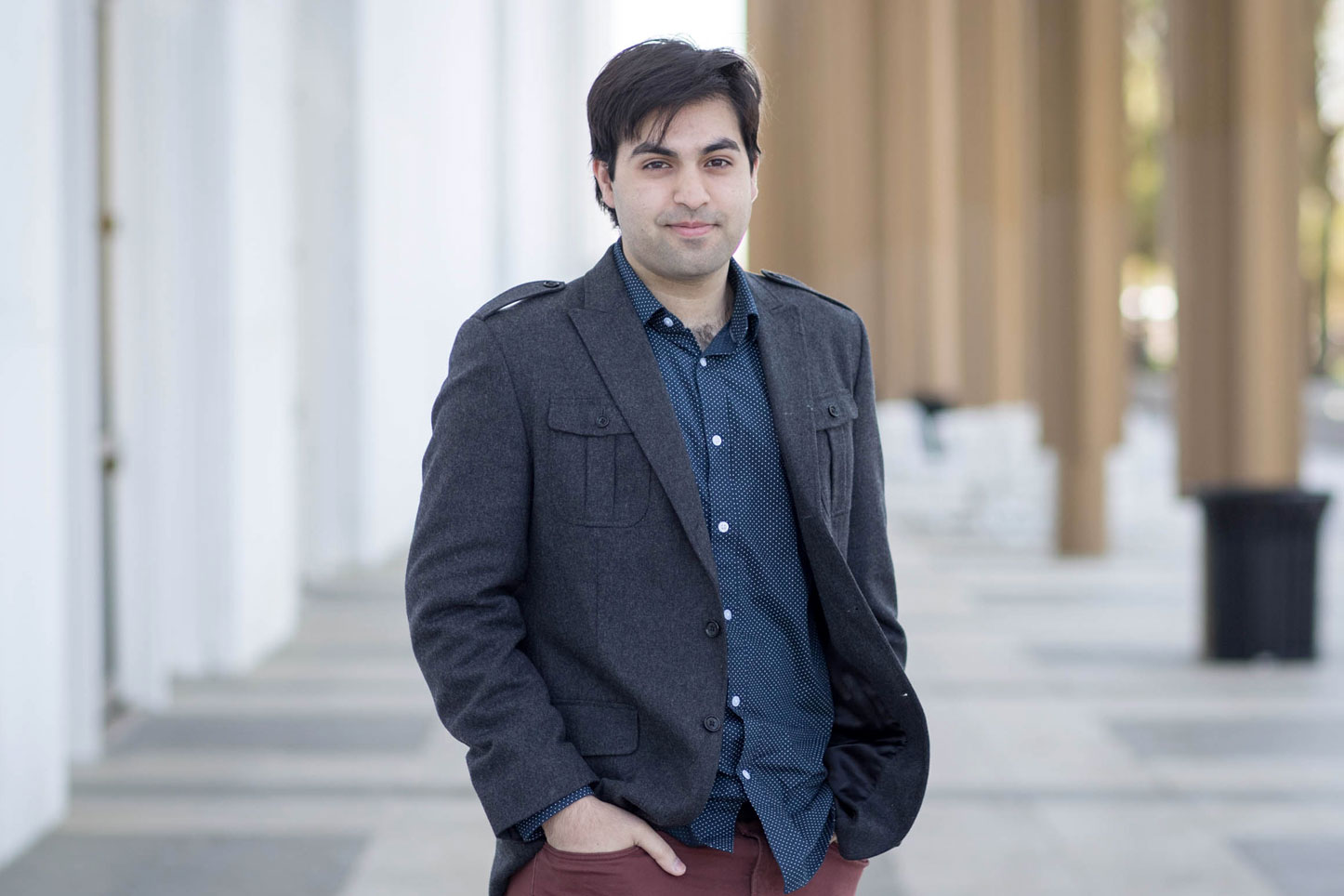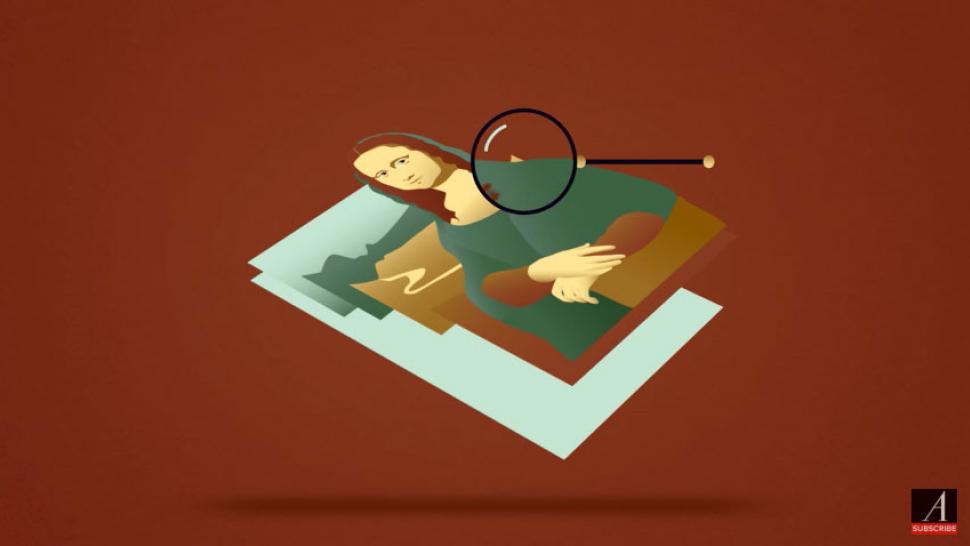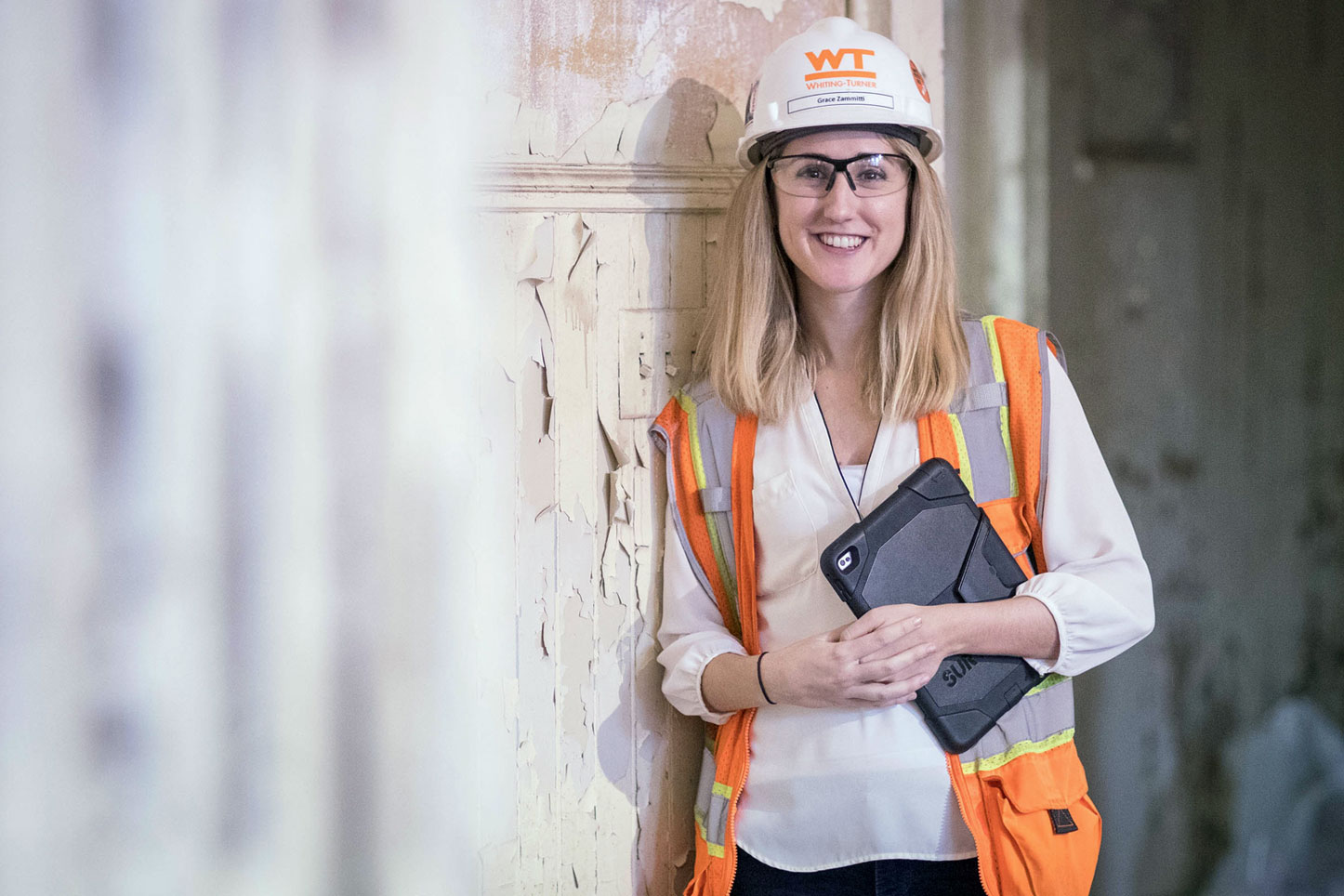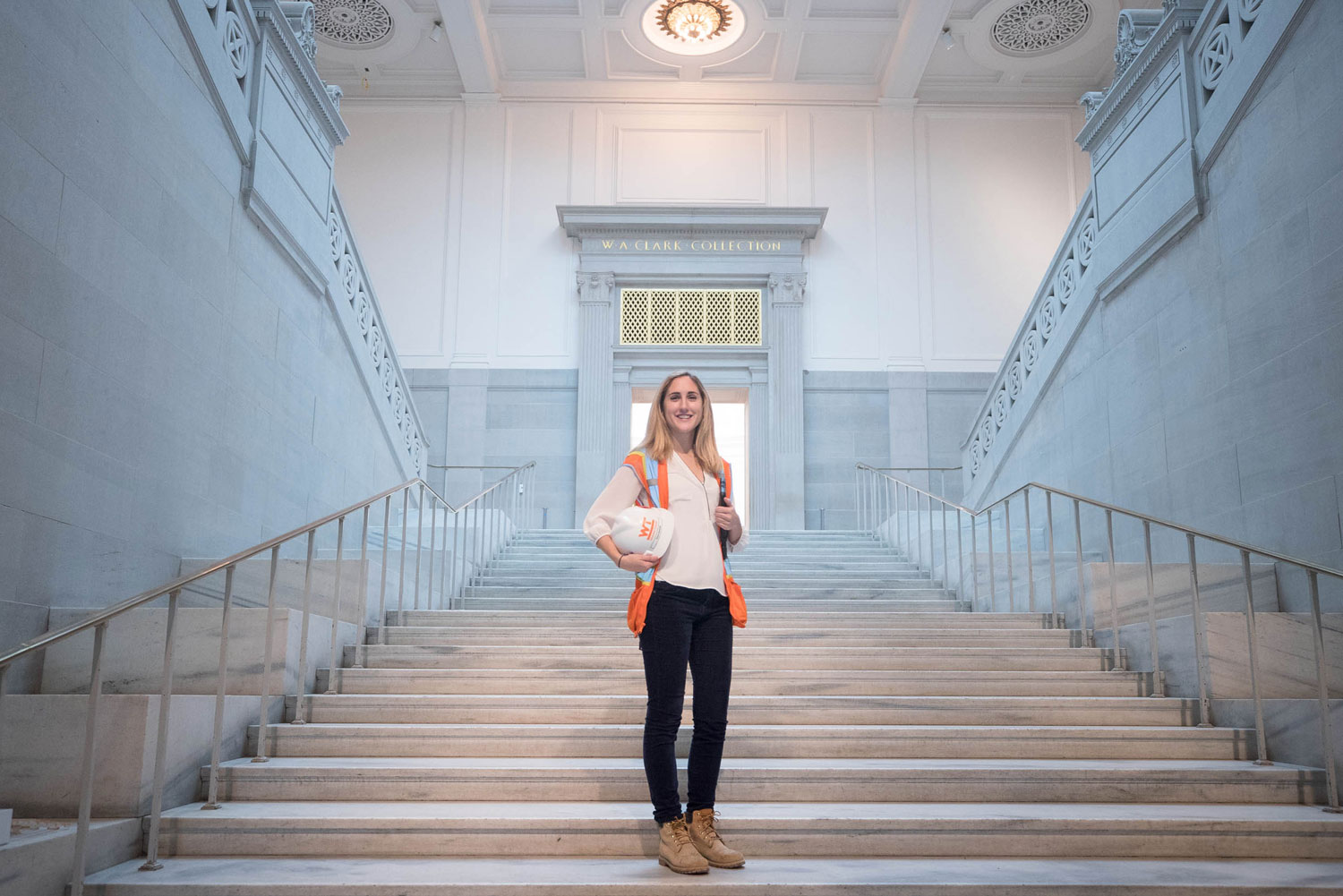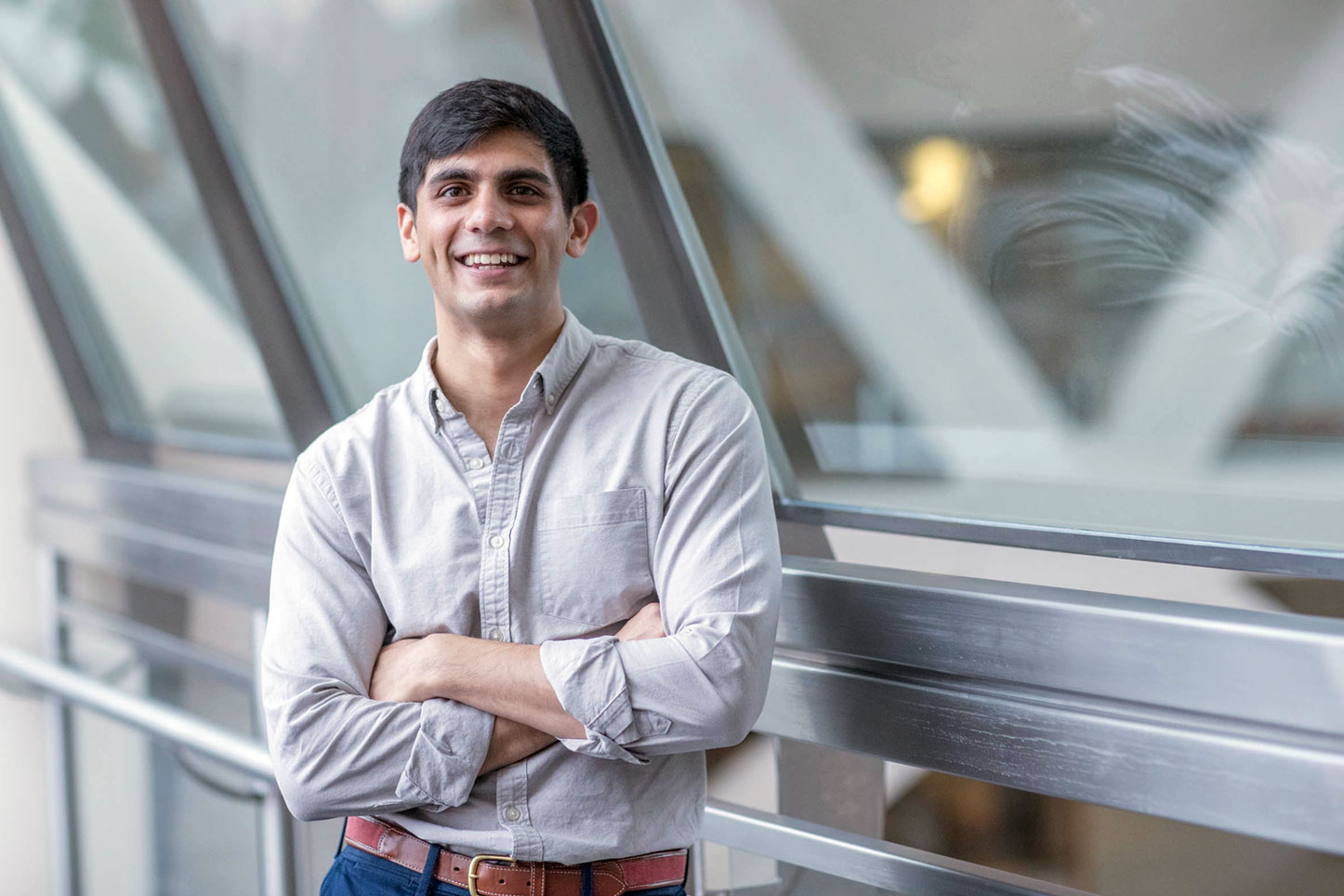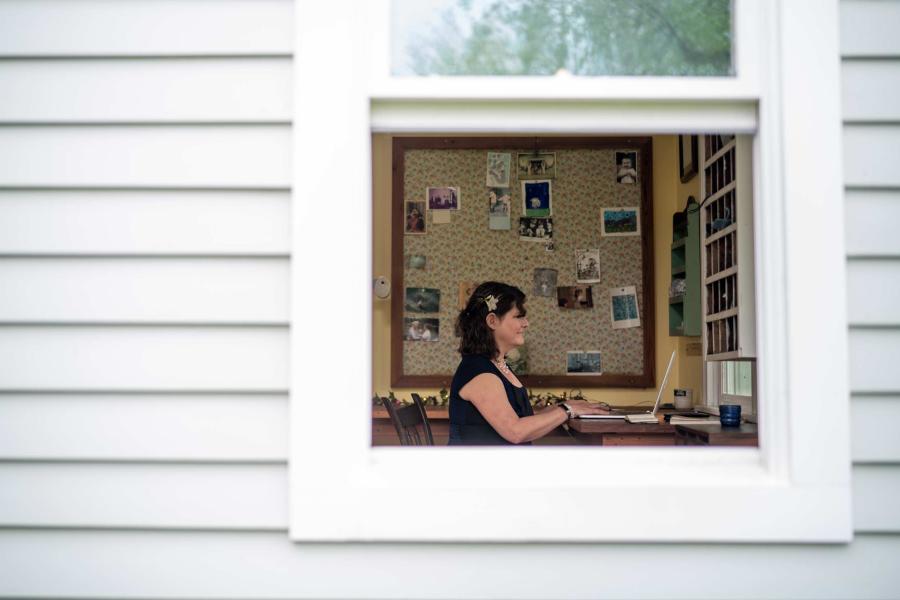MEET FOUR YOUNG UVA GRADS NAVIGATING THEIR EARLY CAREERS
/ GREATER GOOD / Caroline Newman / 05.22.18
ach summer, thousands of newly-minted UVA graduates go straight from the Lawn to the workforce, where they don new titles, pick up new tools and test how well their UVA education prepared them.
Like any new employees, all of them - the nurses, the engineers, the writers, the bankers, the teachers, the artists - are excited and nervous all at once. They are sad to leave their college years behind, but eager to see what their brand new careers will bring.
Here are some of their stories.
Marta Moore started thinking about being a nurse when she was still a child.
As an elementary schooler, she had to go into the hospital for surgery. She doesn’t remember much about the procedure itself, but she does remember how kind her nurses were.
“I remember not wanting to take the medicine or be put to sleep. I was scared and they were so comforting,” said Moore, a 2015 graduate of UVA’s School of Nursing. “They made a really big impact on me.”
By high school, Moore was researching health care careers and volunteering in local clinics. Nursing, she realized, would give her the best opportunity to regularly interact with and support patients like her younger self.
“I really liked the way that nurses got to work with patients and with their families so closely,” she said.
Now, Moore is a nurse in the Pediatric Intensive Care Unit at UVA, where she cares for patients from birth through age 18. Some of them are recovering from cardiac surgery treating congenital heart defects; some are dealing with respiratory issues; and some battle a host of different concerns.
“It’s always changing. There is always something new,” Moore said.
“Marta is a quiet leader, she is very approachable and she gets things done. She’s humble and just really wants to make the world a better place,” said Theresa Carroll, the senior assistant dean for academic and student services in the School of Nursing and one of Moore’s mentors.
Moore’s days vary based on the needs of her patients. There are 17 beds on the unit, with patients ranging in age from infants to 18-year-olds. (Photos by Sanjay Suchak, University Communications)
“All of those things make her an incredibly effective pediatric nurse, even when dealing with some really intense situations, caring for some of our sickest patients,” Carroll said.
Because it is an intensive care unit, Moore and her colleagues face both happy moments – when patients recover from difficult procedures and can go on to normal, happy lives – and tragic ones, when some of their pediatric patients do not recover.
In those emotional moments of loss, Moore relies heavily on her UVA colleagues.
“The team of nurses here is amazing. I love our patients and their families, but I would not be able to do any of what we do without the team,” she said. “Everyone is so supportive; it’s like a family.”
Moore also falls back on lessons of resiliency and compassionate care that were heavily emphasized alongside scientific and clinical knowledge in the School of Nursing.
Programs like the UVA Compassionate Care Initiative, a collaboration between the schools of Medicine and Nursing that began in 2009, offer strategies, resources and programming to help medical professionals manage stress, respond to difficult, emotional cases and prevent burnout.
“UVA really focuses on resiliency and compassionate care, and those skills were so important to me as a new grad,” Moore said.
The lessons she learned help Moore to focus fully on the patient at hand rather than becoming overwhelmed by the tasks of the day, and to take a step back and take care of herself after an emotional case or difficult loss.
“It is a little overwhelming to learn everything that you need to know about a specific patient population when you first start,” she said. “Having that background definitely made for a smoother transition.”
As she begins her third summer on the pediatric unit, Moore is also looking ahead to her final year of graduate school. She has continued working while studying in UVA’s Pediatric Nurse Practitioner master’s program, specializing in acute care.
“I have loved it so far,” Moore said of the graduate program.
After a year of clinical studies, she will graduate in the spring of 2019 with the title of nurse practitioner. She does not know exactly where her career will take her after that, but she knows that she wants to continue nursing and working with children, who have the unique power to brighten even her toughest days.
“Being able to have those moments with patients and their families means a lot,” she said. “Just having little moments in your day to make things easier for them.”
ATTHAR MIRZA
THE ANIMATOR
When he came to the University of Virginia, Atthar Mirza knew that he loved making movies, coding websites and creating intricate models. He did not know if he could roll all of those interests into one college degree.
Until, that is, he discovered the design-thinking concentration in UVA’s School of Architecture. The concentration encourages students to think like product designers, analyzing how design and technology can help solve problems in a huge range of fields.
Mirza soon immersed himself in everything from coding and webpage design to 3-D printing and virtual reality technology. One of his projects – a virtual reality experience that let people in Charlottesville put themselves in the shoes of migrants and refugees in Europe – was featured at the Virginia Film Festival.
“I was able to focus on all of the skills that I wanted to use in a job one day,” he said.
That day arrived quickly. Just a few weeks after graduating in May 2017, Mirza started working as an animation fellow at The Atlantic, the prominent Washington, D.C.-based publication that covers everything from politics to fashion.
He works directly with The Atlantic’s video team on web development and animations like the one below – his current favorite – shedding new light on the creation of Leonardo da Vinci’s “Mona Lisa” more than 500 years ago. Mirza had a lot of responsibility on the project. He designed the animations, adapted the script and even narrated it himself.
One of Mirza’s animations for The Atlantic focused on Leonardo da Vinci’s famous Mona Lisa painting. (Video: The Atlantic)
His work is indicative of traditional media companies’ growing interest in new media technologies, such as animation, augmented reality and virtual reality. For example, the New York Times debuted augmented reality coverage of the Winter Olympics, projecting lifelike images of the athletes into viewers’ living rooms through the New York Times app.
Such projects – being undertaken at The Atlantic and across the media world – energize Mirza.
“I get to do something different and challenging every day. Every project, every pitch is a new undertaking,” Mirza said. “I really do feel lucky to be here, to get to work with such incredibly talented people.”
Fellowships like Mirza’s are very competitive. The fellows, all recent graduates, are paid and work full-time. They participate in the program for one year, learning about many different aspects of the media company. Some stay on at The Atlantic, while others go on to different positions in media, technology and other fields.
“I was so proud to see Atthar go off to The Atlantic,” Elgin Cleckley, an assistant professor of architecture and design thinking, said. “We have a running joke that we are all just waiting to see Atthar get his Oscar one day – he is just that kind of student. He epitomizes what we want to help students do in the design-thinking program: obtain the skills they need to find their own way and voice in the design world.”
Mirza found out about the fellowship through a UVA career fair, where he met one of the coordinators. He applied shortly after and, to his surprise and delight, got the offer.
Mirza’s fellowship with The Atlantic took him to the publication’s Washington, D.C. headquarters in the famous Watergate building, where he works on animations and videos. (Photos by Sanjay Suchak, University Communications)
“I did not really expect to go into news or media at the time,” he said.
The more he considered the fellowship, though, the more he realized how well it fit with what he had been doing at UVA. In addition to his classwork in the School of Architecture, Mirza was a student worker in the Robertson Media Center and the Digital Media Lab in Clemons Library, where he was something of a jack-of-all-trades. He worked at the front desk, helped students select cameras and other equipment for their projects and even taught a few workshops on animation software.
“It was such a great time,” he said. “Those are a bunch of really passionate people – they were ‘my people’ at UVA, if that makes sense. We all cared a lot about digital creation, and everyone was doing cool work, all sorts of video projects and other stuff.”
He also took in a lot of advice from design-thinking professors like Cleckley. Mirza said Cleckley would often hold informal talks with graduating students, giving them advice for their first job and first year out of college.
“A lot of professors were very supportive,” Mirza said. “It’s been really helpful to have awesome people easing that transition a little bit.”
Now that he has been at The Atlantic for about a year, he’s starting to think about his next step.
“I know that I want to keep doing animation and design work, and I am very interested in interactive graphics and data visualization,” he said. “I want to continue working on projects like that, and being able to do that work at The Atlantic, alongside such awesome people, has given me the confidence to keep going.”
GRACE ZAMMITTI
THE ENGINEER
As an undergraduate student, Grace Zammitti got to know the University of Virginia’s iconic Rotunda better than most.
She spent the better part of two years as a student intern with UVA’s Facilities Management division, working alongside the architects, engineers and contractors who restored the University’s iconic centerpiece before it re-opened in 2016.
Zammitti, who graduated in 2015 with a civil engineering degree and minors in architecture and business, called the internship “the pinnacle” of her UVA experience.
“Getting to work on the Rotunda – the same building that Jefferson worked on – was so meaningful to me and really allowed me to give back to UVA in such a unique way,” she said. “I was really interested in the historic aspect of it, and loved working on something that had been around for much longer than I had and will probably outlive me by hundreds of years.”
She recalled walking by the construction zone around the Rotunda every day, wishing she knew more about what was going on. Then, Zammitti said, she realized she should simply ask. She approached faculty members in the School of Engineering and Applied Science and officials in Facilities Management to see how they would feel about letting a student on site. They thought it was a great idea.
“She is just that kind of person, who if she sees something she’s interested in, she will find a way to get involved,” said Brian Smith, professor and chair of the Department of Civil and Environmental Engineering. “Grace is a remarkable person and a great student … bright, personable, a real leader, just the kind of student we love to have here.”
Zammitti is involved in project management for the Planet Word project, which is currently in the demolition phase. Zammitti will help redevelop the historic Franklin School building into the new language arts museum. (Photo by Sanjay Suchak, University Communications)
Zammitti’s work on the Rotunda solidified her future career path. As she sat in on meetings with architects and engineers, worked with historic preservationists on the new capitals and even joined the construction staff on the Rotunda roof, she knew she had found what she wanted to do.
“I think I always knew I wanted to build things,” said Zammitti, who gravitated to math and science as a child. “I am intrigued by the idea of building something much larger than you are; contributing to something bigger.”
Nearly three years later, she is still building.
Zammitti is now an assistant project manager with The Whiting-Turner Contracting Company in Washington D.C. Fittingly, she mainly works on renovations of historic buildings. She recently completed a project at an art gallery, and is now working on a museum.
“To be honest, it is kind of my dream job,” she said. “I’ve always wanted to be part of a team building something together.”
Zammitti’s responsibilities include managing different subcontractors, such as electricians or demolition firms; keeping track of schedules and budgets; and working with her teammates to solve the myriad problems that crop up daily on any construction project.
“It’s a lot of problem-solving. There is always something that you did not expect,” she said.
For many of those problems, Zammitti relies not only on her education as a civil engineer, but on the business and architecture classes that she took for her two minors.
Earning the engineering major and two minors required careful planning. Zammitti said she planned out her four-year schedule during her first semester – no easy feat for a first-year student. Now, she knows it was worth it.
“I’m so glad I did that, because I think it made me a multifaceted engineer,” she said.
Zammitti works with architects on a near-daily basis to understand their design and vision for a particular project, and the business minor helps her to keep a close eye on the financial health of each project.
“I was able to tailor my education to my career goals, and that has really helped me,” she said.
Looking ahead, she would love to move up the ladder and become a project manager, running construction projects on her own.
“Right now, I am an assistant project manager, and I learn so much every day. I’m excited to get to a point where I know enough to run my own job and restore buildings with cultural and historical significance,” she said.
For now, she is grateful that her first job has proved such a good fit for her skills and interests.
“I feel like I got lucky in that I really love my first job and I can see a future and a career in this position,” she said.
AMAN MANGALMURTI
THE NEUROSCIENTIST
Often, the best part of University of Virginia alumnus Aman Mangalmurti’s week is time spent in local clinics with children and their parents.
Mangalmurti, who graduated in 2017, now works at the National Institutes of Health in Bethesda, Maryland in the Post-Baccalaureate Intramural Research Training Award program. The neuroscience graduate is working in the Shaw Lab, a child psychiatry research group studying attention deficit hyperactivity disorder, or ADHD.
“When you work with young kids, you hope you are making a long-lasting impact,” he said. “ADHD affects so many people, so there is an opportunity for our research to have a large impact.”
The lab tracks groups of children over time, studying their symptoms and social environments and using neuroimaging to track how their brains are developing. Mangalmurti said they especially focus on creating and analyzing large data sets – big data is a growing emphasis in neuroscience – and on patients’ genetic makeup.
“There is a large emphasis on genetics, especially,” Mangalmurti said. “We are learning more about mental health at a very granular, biological level.”
At UVA, Mangalmurti worked in a laboratory led by neuroscience professor John Lukens. Among other things, Lukens investigates the root causes of autism spectrum disorders.
Mangalmurti spends some days in the hospital working with patients and caregivers, and some doing research in the lab. (Photos by Sanjay Suchak, University Communications)
Lukens, who still stays in touch with Mangalmurti, said he was an exceptionally talented and personable student.
“He has an extraordinary ability to key in on the important questions very quickly. I would take him to meetings with the department chair to brainstorm exciting ideas in the field, because I knew he would have some creative, key ideas to share,” Lukens said. “He’s very intelligent, but he is so humble about it, and so personable.”
Mangalmurti said Lukens’ lab prepared him well for his current work.
“It was a great research experience, working closely with John Lukens, who is a really positive mentor,” Mangalmurti said. “It gave me a lot of confidence to come work at the NIH.”
Though he just joined full-time last summer, Mangalmurti was already familiar with the NIH; he interned in the summer research program there after his first year at UVA.
He spent another summer as the pediatric oncology education intern at St. Jude Children’s Research Hospital in Memphis, Tennessee. “I have always loved working with kids,” he said.
At UVA, Mangalmurti spent several hours each week with local teenagers through the Men’s Leadership Project at UVA’s Maxine Platzer Lynn Women’s Center. Male undergraduate students serve as “big brothers” and mentors to middle school boys in Charlottesville, spending time with the boys at school and during other activities each week.
“We worked to foster qualities of leadership and respect,” he said. “It was such a cool experience, and really motivated me to keep working with kids.”
The mentor-mentee relationships taught him a lot about communicating around difficult issues, Mangalmurti said, as did his time as a Peer Health Educator at UVA. Peer Health Educators are UVA students trained to talk with student groups about health and wellness issues like nutrition, alcohol and drug abuse or sexual health.
“It required lots of public speaking and communication, sometimes about perhaps-sensitive issues,” he said.
Those skills have come in handy at the NIH.
“It really helped me build the confidence to reach out to people and communicate effectively,” he said. “In this role, I frequently talk with kids and their families. You have to know how to read people, especially kids.”
After his fellowship at the NIH ends this year, he hopes to enroll in an M.D.-Ph.D. program and continue gaining research experience, likely still focused on pediatric health.
“One day, I would love to run my own lab, and perhaps be a professor,” he said.
Lukens believes his former student has what it takes to have his job one day.
“No doubt about it,” Lukens said. “He would be a great educator and students would love working with him.”

